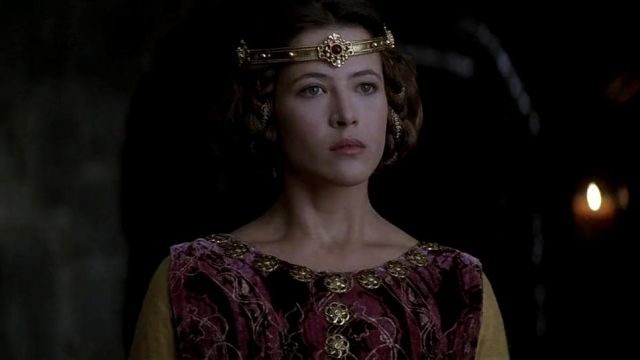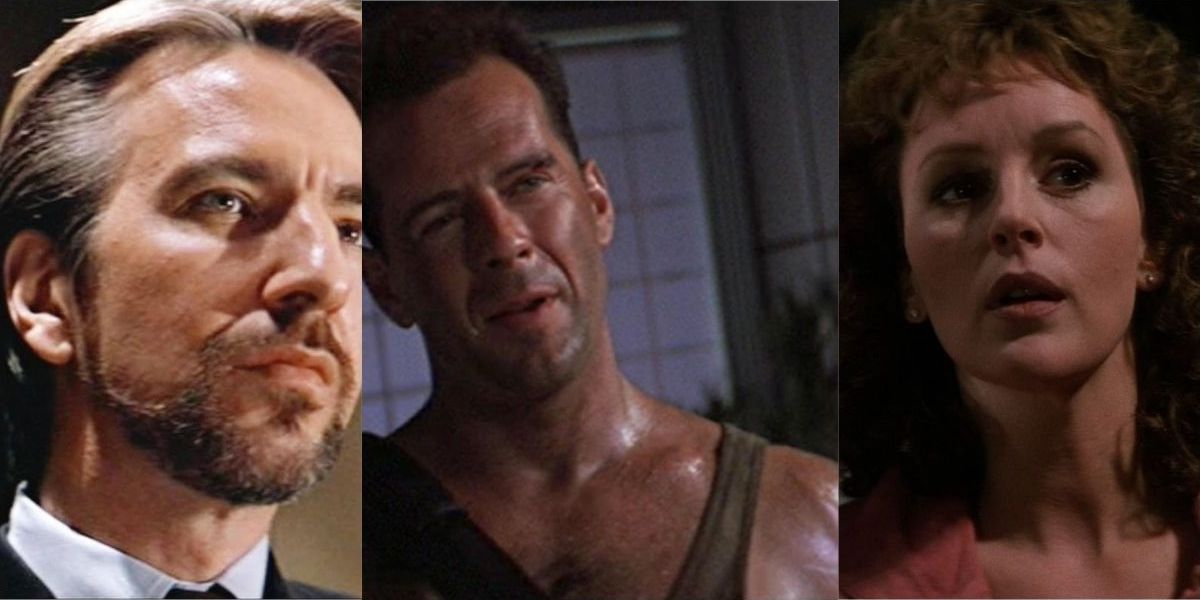If you are a fan of Raiders of the Lost Ark, it is likely that some of your favorite moments from the film are not those of Indy in Egypt chasing the Ark of the Covenant. They instead come from the film’s opening thirteen minutes, a section depicting a completely different adventure set in a completely different spot on the globe: Indy’s quest for the golden idol in the Peruvian temple. Yet if you are a student of screencraft, versed in the rules of movie structure, you should realize that this section is irrelevant to Raiders’ main narrative, as the pursuit of the idol has nothing to do with Indy battling the Nazis for the Ark. In fact, this little adventure it is over and done with before Indy even learns of the Ark (the story’s inciting incident). Indeed, a viewer could skip the first thirteen minutes of Raiders and not miss out on anything that might keep them from understanding the remainder of the film. So what exactly is this opening section, and what is its deal?
In the same way, depending on who you are, your favorite part of Rocky might have nothing to do with the titular character’s match with Heavyweight Champion Apollo Creed, but Rocky’s sweet yet bumbling efforts to woo Adrian over the film’s opening fifty minutes. Like the Peruvian section of Raiders, the romance between Rocky and Adrian has nothing to do with Rocky’s main Story Spine, and reaches a point of resolution before the story’s true inciting incident (at 56:00) when Apollo Creed selects Rocky as his next opponent. For the remainder of the film, Rocky’s relationship with Adrian remains stable and uneventful, exerting practically no influence upon the story’s central conflict. Indeed, if a viewer cares nothing for romance, they might skip the movie’s first fifty minutes and not miss much of a beat.
So, structurally speaking, what are these sections? Why have they been included in the film?
Are THESE subplots? Once again, the answer is NO. These are prologue narratives.
A prologue narrative is an independent, self-contained, mini-story presented at the beginning of a film. They are self-contained in that they feature their own clear beginning, middle, and end—a course of narration that plays out, without interruption, to a conclusion before the introduction of the inciting incident of the movie’s main plotline. As their own “mini” stories, prologue narratives bear all the marks of the classic cinematic narrative structure, albeit played on a shorter timeline. Every prologue narrative possesses its own story spine, its own three-act structure punctuated by dramatic turning points, and its own climactic resolution. Once the prologue narrative reaches its conclusion, the discourse pauses and then switches tracks, now initiating the setup for what will be the movie’s main narrative. To put this another way, the movie ends the appetizer story and starts its main course, with no return to the dramatic conflicts or objectives found the former.
Prologue narratives are rare events in feature films. Nevertheless, Hollywood has given us several memorable examples. Along with Raiders and Rocky, the 2001 Best Picture winner A Beautiful Mind opens with a 27-minute prologue narrative depicting protagonist John Nash’s experiences as a Harvard grad student. After a climax in which Nash receives formal recognition for his peculiar intellectual gifts, the discourse jumps five years into the future, with Nash now a Professor. This is when Mind’s real story begins. Braveheart contains TWO prologue narratives: the first depicting protagonist William Wallace in his youth; the second Wallace’s return to his native village to fall in love and marry Murron, with the hopes of starting a home and family. These twin prologue narratives have the effect of delaying the main narrative’s true inciting incident to around the 45 minute mark. (Although there is some overlap: the event which serves as the climax for the second prologue pulls double-duty as the inciting incident of the main narrative). And, let’s not forget the James Bond franchise, where practically every installment begins with an action-packed prologue which is often only tangentially related, or not at all related, to the mission Bond later receives.
If prologue narratives are their own self-contained pieces of storytelling, a piece the movie could essentially operate fine without, what it their purpose? What does the discourse gain from presenting a mini-story as an appetizer before its main course? Apart from being entertaining stories in their own right, prologue narratives also provide an active setup for the main story-to-come, as opposed to the static setups found in most feature films. A static setup simply introduces the protagonist’s status quo: the main characters and their lives and environment as it exists before the inciting incident throws things into disequilibrium. A prologue narrative, however, introduces the characters, their qualities, the story environment, and other elements constituent to the main plotline in an active manner as we observe the protagonist engaging with other problems and taking goal-oriented actions to resolve them. When the prologue narrative concludes, most of the expositional heavy-lifted has been accomplished, allowing the discourse to swiftly shift into the setup for its main plotline. Thus, before the inciting incident throws the main drama into motion, we already know Indy’s skill as a relic-hunter (and of his professional rivalry with Belloq); we know all about Rocky Balboa’s characteristic virtues and insecurities, along with the characteristics of his friends and allies; and we know what motivates William Wallace to revolt against the English.
If a film can open with a mini-story as a prologue narrative, can it not also end with an epilogue narrative; that is, another self-contained mini-story placed at the end of the film, initiating after the resolution of the main Story Spine? Theoretically, yes. However, this is almost never seen in theatrical feature films. Why? Well, once the main plot’s climactic event occurs (that is, the moment when the protagonist either successfully achieves or permanently fails to achieve his or her Story Goal), the Story Spine is completed and the story is essentially over. The conflict has been resolved, the audience’s questions have been answered, and there is not much left to retain viewer interest. So, a movie would need a pretty darn good reason to keep the viewers in their seats for another fifteen to twenty minutes, rather than wrap the film up then and there.
In fact, I can think of only one good example of a film which successfully implements an epilogue sequence: The Shawshank Redemption (1994).
The Shawshank Redemption is the story of Andy Dufrene and his twenty-year imprisonment for a murder he did not commit. At the story’s climax, Andy escapes from Shawshank prison, brings punishment upon the corrupt Warden, and disappears to freedom in Mexico. So, the story is over, right? The protagonist is gone. The movie can happily end right there.
Yet Shawshank’s storytellers sense a good reason to keep the discourse going. Surmising that its viewers would grow quite fond of the supporting character Red, enough to want to know how his story ends, the storytellers saw fit to give Red his own epilogue narrative covering the last twelve minutes of the film. Red’s epilogue is its own self-contained mini-story. It has a unique protagonist (Red), its own story spine (centered around the question: Will Red survive life outside of prison, or will he meet the same tragic end of his friend Brooks?), and its own three-act structure:
Inciting incident: Red is paroled. Act 1: Red follows the same path as Brooks upon his release, leading to self-despair. First turning point: Red decides he can’t give up until he fulfills a promise he made to Andy. Act 2: Red ventures forth following Andy’s instructions. Second turning point: Red finds a letter from Andy with an invitation to join him in Mexico. Act 3: Red breaks parole to head to Mexico. Climactic resolution: Red reunites with Andy to start a happy new life.
Yet, despite this one well-known instance, epilogue narratives are an extreme rarity – more of a theoretical possibility than a familiar practice. If you can think of any other films that conclude with a full-fledged epilogue narrative, please let me know in the comments.
(Okay, I guess technically Cast Away (2000) ends with an epilogue narrative which tells the story of the protagonist’s attempts to reunite with his wife. But I wouldn’t call this a successful epilogue, as it comes off more as a long and tedious resolution sequence. If there are two things people remember about Cast Away, they are Wilson the Volleyball and how boring the last fifteen minutes were.)
So, to summarize this series of articles thus far: relational arcs are not really “subplots”; story threads in a plural narrative discourse are not “subplots”; prologue and epilogue narratives are not “subplots.” What narrative structures, then, DO fit the formal definition of a “subplot?” Well, now that we have cleared away the various narrative structures often mislabeled as “subplots,” we can now look into what IS a true subplot to finally define the concept in the proper. This will be the topic of the following and final article.












